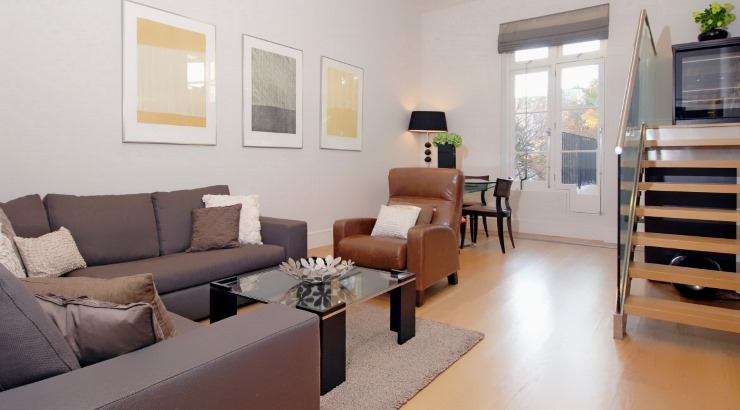Interior Design
Using Basic Design Elements to Decorate Your Home
Colour, line, space, texture and shape can be used to create stunning homes.

Home decoration employs five key elements that go hand in hand with the principles of design to create functional and aesthetically appealing homes. These include colour, line, space, texture and shape.
Whether you are starting on a blank space in a new home or you intend to go in a new direction using existing furnishings, how you apply the five design elements determines how successful you will be in your home decoration project.
1.) Colour
Colour is the most expressive and noticeable element of design and has the utmost impact on the appearance of a room. It is a great way of adding personal style and taste to a home.
Besides being decorative, colour can be used to create illusions of space, depth and mood. Bright colours such as red, yellow and orange make a space look larger, warm and vibrant.
Dark colours such as brown and black have a dull effect on a room in addition to making it appear smaller.
Purples, greens and blues make an interior seem cool, cosy and restful while contrasting colours can be used to draw attention to a certain area in a room.
Using the colour wheel as a reference point, great colour combinations can be achieved in any home decorating venture.
2.) Line
This is the outline that defines the shape of an object. All lines have direction which can either be vertical, horizontal or oblique.
Vertical lines create an illusion of height and elevation while giving a notion of strength, formality, and balance to a room while horizontal lines seem to create length and add depth to an interior at the same time creating a feeling of stability and calmness.
On the other hand, oblique lines suggest movement, action or chaos while curved lines which often feel natural and playful create an illusion of softness and gracefulness in a room.
3.) Space
Space is the foundation upon which the interior decoration plan of a home is built. It is a blank canvas that the interior designer works with to heighten functionality and style.
There are two types of space in a room namely – two-dimensional space, which has length and width and covers the floor, walls and ceiling, and three-dimensional space which has length, width and depth and forms the living space.
RELATED: 15 Best Free (and Paid) Interior Design Software
The right use of space can make a room appear larger or smaller. If you are working in a small space, keep furniture and accessories to a minimum to avoid overcrowding.
If your room is large, avoid skimping on furnishings. Instead, use large pieces of furniture and avoid pushing them against the wall.
Illusions of a larger or smaller space in home decoration can be achieved through the proper use of light, colour, line and texture.
4.) Texture
Texture refers to the smoothness or roughness of a surface. It is both seen and felt but appeals more to touch than sight. Using varying textures in a room adds more interest to the surfaces and furnishings in the room.
Visual texture is the illusion of physical texture usually generated by the patterns on fabrics, walls and accessories used in the home décor while their surfaces remain smooth.
While coarse or rough surfaces tend to appear heavier and seem to occupy more space, smooth and shiny ones reflect light making them appear lighter, cool and more formal. Soft fluffy surfaces have a warm and cosy effect in a room.
Texture can be added to a room through the use of wallpaper, cushions, rugs, drapes and other accessories.
5.) Shape
Shape refers to the outline or form of the furniture, accessories or the space itself. It can be used to add style, theme and personality to a room.
The use of square, rectangular and other cornered objects in home decoration makes a room appear hard while the use of curved objects makes it appear soft and graceful.
It is worth noting that using many differing shapes in a single space can result in a confusing and incoherent design.














